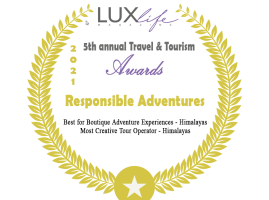Important facts about Bhutan
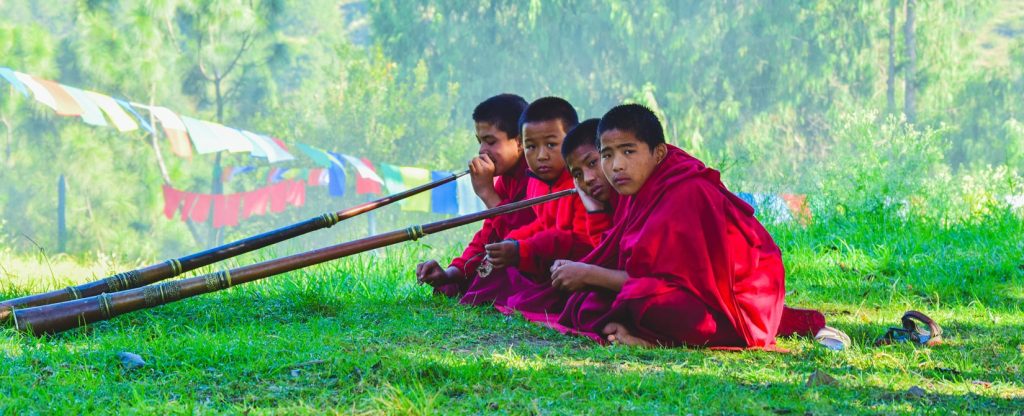
Important facts about Bhutan It is not a surprise that very few people know minimal facts about Bhutan. Even the most experienced travellers will probably be unsure where the location of Bhutan. Bhutan’s government has deliberately remained closed to protect their ancient traditions even though government-approved tours are possible. Despite being a developing nation, the number of tourists entering the country is controlled by high costs. The government has set a high season cost of US$250 per person per day, and this is to discourage mass tourism, which could influence their youths away from their traditions. Bhutan has been off the backpackers’ list because of the high cost. Where Is Bhutan? Bhutan is in the Eastern Himalayas and is a small nation sandwiched between India and Tibet. It is east of Nepal and north of Bangladesh. It is a member country of the South Asian Association for Regional Corporation (SAARC). Facts About Bhutan With 38,359 square kilometres of territory, Bhutan is slightly larger than Taiwan and a little smaller than Switzerland. Most of the country consists of Hilly and mountainous terrain. Druk Yul is the local name for Bhutan. It means “Land of the Thunder Dragon.” The dragon is on the flag of Bhutan. To modernise Bhutan, the past King finally permitted television and internet access into the country only in 1999. Bhutan is among the last nations in the world to allow TV. Some television channels are received from their giant neighbour, India. The past king issued warnings that abuse of television could corrupt their traditional lifestyle. Citizens must wear national dress. The men wear traditional, knee-length garments called “Gho,” and the women wear ankle-length dresses with a silk or brocade blouse called “Kira.” The colours can indicate someone’s status and social class. Bhutan was the first nation to ban the production and sales of tobacco products in 2010. Although it is illegal to smoke in public areas, tobacco products can be used in private. The first King of Bhutan called tobacco the “worst herb” as early as 1916. The violators are slapped with a hefty fine, as much as two months’ average salary. Bhutan is the pioneering nation in creating the measurement of national happiness officially. The index is called Gross National Happiness (GNH). The government has emphasised GNH, prioritising GDP over the rest of the world. This Himalayan nation intends to track the happiness of the population. The United Nations adopted this idea and released a World Happiness report in 2012. Before the focus on internal happiness started, the Bhutanese government was accused of human rights violations against ethnic minorities living there, especially those of Nepalese origin. As a result, 100,000 were forced out of the country or into refugee camps. The United States has accepted more than 95,000 Bhutanese refugees since 2008. The Bhutanese government provides free education. Buddhist teachings are highly prioritised. English is a widely taught second language in its education system. Only 30 per cent of the male and 10% of the female population were literate before the education reform was passed in the 1990s. Bhutan is unique, where the inheritance of land, house, and animals is passed on to the eldest daughter rather than the son or sons, like in most Asian cultures. The husband often moves into his new wife’s home until he becomes financially independent. The Bhutanese were discouraged from marrying foreigners. The law forbids homosexuality. Although polygamy is legal in Bhutan, the practice has become frequent. Archery is the national sport of Bhutan. Soccer is the second most loved sport in Bhutan, while recently, basketball and cricket have been gaining popularity. Vajrayana Buddhism is the national religion of Bhutan. It follows the tantric Buddhist texts. Health, Military, and Politics Bhutan lies directly between two giant neighbours, China and India. These two nations are not on the best terms and clash politically now and again. However, Bhutan is the buffer between these two nations as it controls many crucial high mountain passes. India and Bhutan have a friendly diplomatic relationship. The Bhutanese can cross into India with just their national ID cards, no visa necessary, and work without restrictions. Moreover, many Bhutanese go to India for further studies. Parts of the mountainous borders are still in negotiation with China. Bhutan is still negotiating parts of its mountainous border with China. The Bhutanese have minimal diplomatic relations with their most prominent neighbour, Aside from land disputes. Now and again, the Chinese soldiers begin constructing roads and bridges in sensitive areas that cause uneasiness in Bhutan. The King of Bhutan abdicated and gave the throne to his eldest son in 2008. Thus, King Jigme Khesar Namgyel Wangchuck became the youngest reigning monarch globally at 28. Bhutan became a constitutional monarchy in 2008, with a two-party system. The 2018 People’s Democratic Party won the elections in 2013. The Bhutanese Army consists of around 7500 active soldiers. In addition, the Indian Army trains the Bhutanese force. Bhutan’s economy is growing very swiftly. The Bhutanese currency, the Ngultrum, is pegged to the Indian rupee. The Indian cash is accepted throughout Bhutan. Bhutan attained membership in the United Nations in 1971. It was a founding member of SAARC (South Asian Association of Regional Cooperation) in 1985. Although primary healthcare is free in Bhutan, the country suffers from a severe shortage of doctors. In 2016, the physician density was 0.38 doctors per 1,000 people, according to https://www.cia.gov/library/publications/the-world-factbook/fields/2226.html. In contrast, the United States has around 2.56 doctors per 1,000 residents. Bhutan’s average life expectancy is 69.9 years for males and 71.7 years for females https://www.cia.gov/library/publications/the-world-factbook/fields/2226.html 2017 data. Travelling to Bhutan Bhutan is one of the most restrictive countries in Asia, if not the world. To visit Bhutan as an independent traveller is next to impossible. You will either need t book with a travel company or be invited by a citizen on an official visit. These days the government has lifted the restriction on the number of tourists per year. However, their set price of US$250 per
Everest base camp trek during the winter season
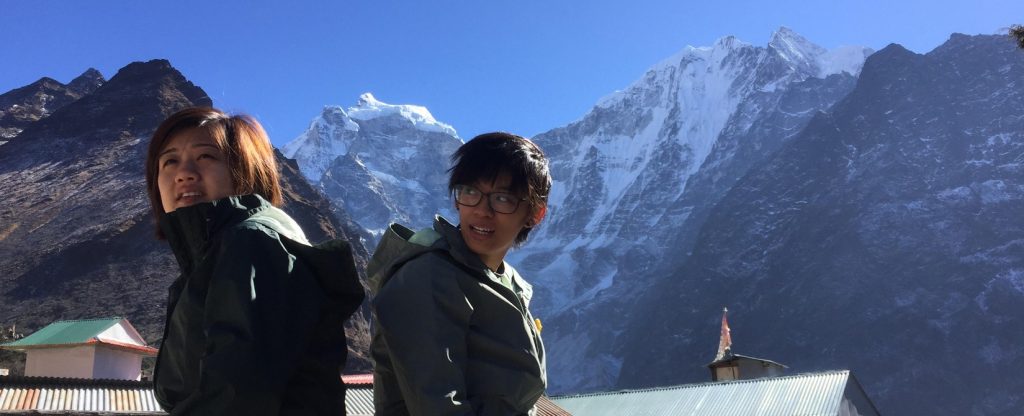
Everest Base Camp trek during the winter Everest Base Camp trek during the Christmas and New Year Holidays. Stephanie contacted us a few months before about Jessica’s trek to Everest base camp. Stephanie and Jessica did the Mardi Himal trek with us in December 2015 with four other friends from Singapore. They confirmed the dates after their vacation got approved at work. They arrived in Kathmandu on the night of the 18th of December. We met for breakfast, and they were helped in the hiring of sleeping bags and doing some shopping for trekking gear on the 19th. We parted ways after they were briefed on their departure from the hotel to the domestic airport to catch Lukla’s flight. Flight to Lukla and trek to Monjo Before heading to the domestic airport, we met at the hotel restaurant for breakfast. Then, we went through the usual formalities of checking in through the security gate, checking in with the airlines with yet another security check, and waiting for the announced flight. Unfortunately, the flight was delayed by just over an hour, usually in Kathmandu, due to the foggy weather in the morning and air traffic congestion. When our flight was finally announced, we boarded the bus, boarded the aircraft, and took off for Lukla. We arrived in Lukla 25 minutes after takeoff, and it was a smooth flight with clear weather. Upon landing at Lukla, we were met by our support crew, who claimed our luggage and met us at the lodge we stayed in at the end of our Everest region treks. Jess and Steph had hot tea while we sorted out the packs for the porter, etcetera. Once the porter’s load was organized, Jessica and Stephanie were given a briefing on how to stay safe while on the trail, especially how to avoid being pushed down the path by pack animals and icy parts of the track. We decided to go to Monjo, two hours further than the usual stopping place at Phakding, for several reasons. We had arrived with plenty of time, and hiking kept us occupied and warm. People from tropical countries at sea level have more difficulties in the cold and altitude, making them slower trekkers than people from Europe, North America, and other countries with four seasons. We stopped for lunch at Phakding at our staff Sundar’s sister’s eatery for Dal Bhat – a Nepali staple consisting of lentil soup, some vegetables, spicy pickles, and chicken or mutton curry. Our team proceeded towards our final destination, Monjo, after lunch. Some trekkers were on their way back, along with mules that had taken supplies to the lodges that were restocking for the coming spring season. We reached Monjo around 4.30 pm. The lodge owners had to be phoned as they had gone to the next village of Jorsalle to plant potatoes. We went to our rooms and sorted our gear before coming down to the woodstove’s warmth in the dining room. After dinner, the ladies were briefed on the next day’s program, and we all retired just after 9 pm. Trek to Namche Bazaar. We were woken up with a hot cup of ayurvedic drinks. This drink contains ingredients that help energize trekkers; it is anti-inflammatory and eliminates cancerous cells. The team started our trek at 9 am, stopping at the Sagarmatha (Nepali name for Everest) national park entrance point to register our trekkers. It is a short 3-hour trek to Namche Bazaar from Monjo, with the final two hours a steep uphill climb. There were some icy bits on the trail where streams flowed. The Singaporeans got their first glimpse of Everest halfway through the trek. Namche was reached in time for lunch. We agreed to meet at 2.45 pm to wander around town before going to our rooms and having hot showers. While walking around Namche Bazaar, we noticed that most shops were shut as the owners had left for ‘warmer’ Kathmandu. We went into the Liquid bar to watch Sherpa, the movie. Unfortunately, the weather had gotten foggy when we came out. We returned to the lodge to have our dinner; as usual, the ladies were briefed on the following day’s program. The plan was to take them to Khumjung village (this is where Sir Edmund Hillary built the first school) for lunch and proceed to Laushasha, similar to Namche. This was again to help the Singaporeans cover some ground to make the next shorter. Namche to Laushasha It was a glorious morning with beautiful blue skies and mountain views. We sorted our things in the rooms upon arrival at our stop for the night and gathered in the dining room to congregate around the wooden stove. We had several rounds of hot drinks and dinner and went to bed early again. Pangboche 3980 m We started our trek after breakfast with a downhill hike for half an hour to Phungkitanga and checked in with the national park rangers before starting our uphill climb to Tengboche Monastery. Once we walked uphill for a few minutes, we took off our layers and hiked in T-shirts. We arrived in Tengboche two hours later for lunch. We walked around the vicinity and took many photos of Mount Tawache, Nuptse, Everest, Lhotse, Kangtega, and Thamserku. We had a leisurely ninety-minute hike after lunch to Pangboche. We started to head to our final destination at around 2 pm and reached Pangboche at 3.30 pm. I took a hot shower (the last one for the next five days as we would be at a higher altitude and colder) before the sun went over the hill while it was still warm. The ladies went to bed at 8.30 pm, and we retired at the usual 9 pm. Amadablam Base Camp 4580 m We headed out for Amadablam base camp for an acclimatization hike after breakfast. Before reaching ADBC, we first had to walk down the Dudh Koshi river, followed by a mixture of steep and flattish terrain. It was
The Differences between Lodge or Teahouse trekking and camping treks
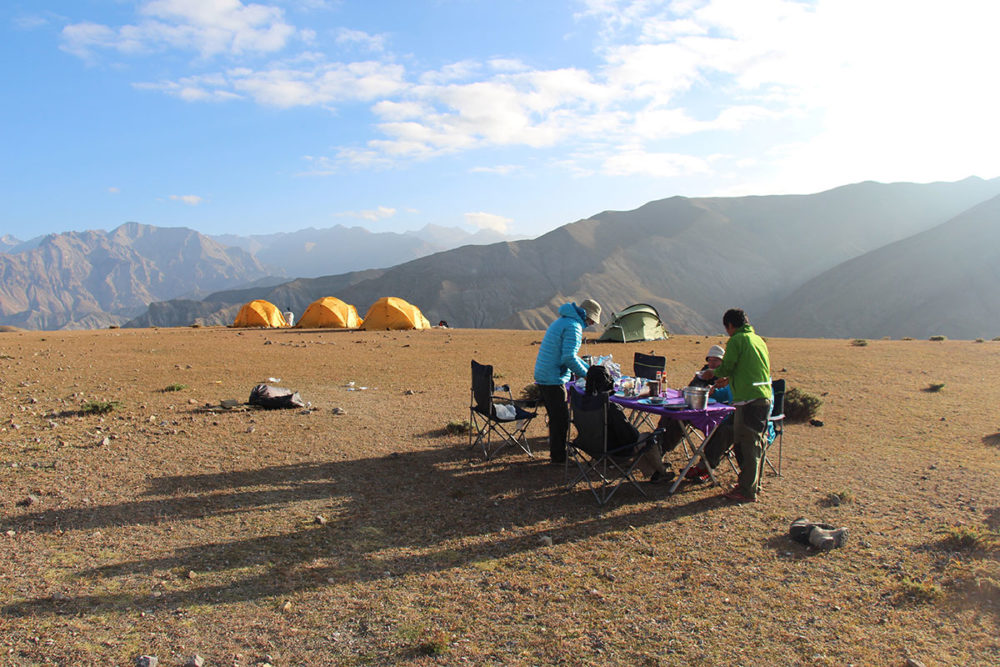
The Differences between Lodge/Teahouse trekking and camping treks LODGE/ TEAHOUSE TREKKING All over Nepal, teahouse trekking has evolved into a more lodge-like experience. However, providing some more creature comforts – relatively consistent meals and beds- remains a pretty affordable way to trek. Teahouses are found throughout the country’s trails, so no matter where you are, you can have a hot meal and a revitalizing sleep. Annapurna, Langtang, Upper Mustang, and Everest regions are full of teahouses, following the country’s well-beaten trekking trails. By the day, however, there are plenty of homestays in the developing paths converting into guesthouses. Teahouse trekking is the new standard, with standardized menus and varying conditions of rooms. A general rule of thumb is that the more developed the trail, the more amenities the lodges have. But when it comes to food, the quality varies, and the interpretation of what constitutes each dish does too. You will be able to find pizza, fried rice, macaroni and cheese, and some other tastes of home in the dining rooms. But keep your expectations low because a pizza in The Himalayas is Nepali, not from Napoli. However, that’s not to detract from the food; don’t go in with Michelin’s standards. Another great benefit to teahouses is being close to locals to converse and learn about their cultures. It’s equally suitable for those not wanting to be burdened with carrying their tents and food for the duration of their trip. If you’re staying in guest houses, you’ll generally have a porter carrying your gear (if you’ve booked with a trekking company); so you will only need to have a 30-40 litre bag for your personal effects, such as sunglasses, drinking water, snacks, hat, and jacket in case of rain. You’ll also be provided blankets, and, in some lodges, there will be wood-burning heaters, and the dining rooms get nice and toasty with all the trekkers reading, playing cards, and having fun after a day’s trekking. A FEW WORDS OF ADVICE: – Don’t leave belongings in the dining rooms unattended. You may lose them, so be sure to ask a buddy or guide to look after them while you are away. – Always lock your room. Generally, guesthouses are safe and secure, but it pays to play it safe. ORGANIZED CAMPING TREKS A camping trek is the original and classic style of trekking. Before Nepal’s tourism industry, entrepreneurs began opening their teahouses, tents, porters, cooks, animals, and guides to run the country’s expeditions. While it might seem daunting to carry weeks’ worth of food, tents, and other paraphernalia, don’t fear. Robust porters carry the trekking gear, hauling food, fuel, utensils, and food. Camping in the Himalayas is luxurious compared to what many Westerners might be used to. But, much like teahouse treks, all trekkers need to carry their daily necessities. The trekking team does the rest: setting and breaking camp, preparing meals, and purchasing fresh food along the trail. Some high-end companies provide makeshift ablution blocks, shower tents, and even heaters for dining tents. It all comes down to how much you are willing to pay for your camping trek, which is generally more expensive. Understandably, the cost difference is because of the number of people employed, the gear they have to carry, and the duration they are away. But, despite the steeper cost, the experience is unlike any teahouse trekkers have because they are off the beaten track, and people can experience much more untouched Nepal. And, if you have the right company, you will get to experience an authenticity you won’t find on a beaten trail. RESPONSIBLE TOURISM: It would help if you were assertive with whatever trekking agency you are about to book to make sure they are environmentally considerate. The best carry out all rubbish produced by their team while catering for you following the ‘Leave No Trace values. The saying goes: “Take nothing but photos and leave nothing but footprints.” WORD OF CAUTION: – If you are fortunate enough to find a top trekking company that can provide a heater for the dining tent, keep part of the zippers/flaps open to allow air circulation to avoid carbon monoxide build-up. Similarly, unzip a part of the inner tent to enable airflow to minimize condensation inside your tent. Check out our Trekking packages for Nepal, Bhutan, India, and Tibet.
Deepavali or Tihar or Diwali
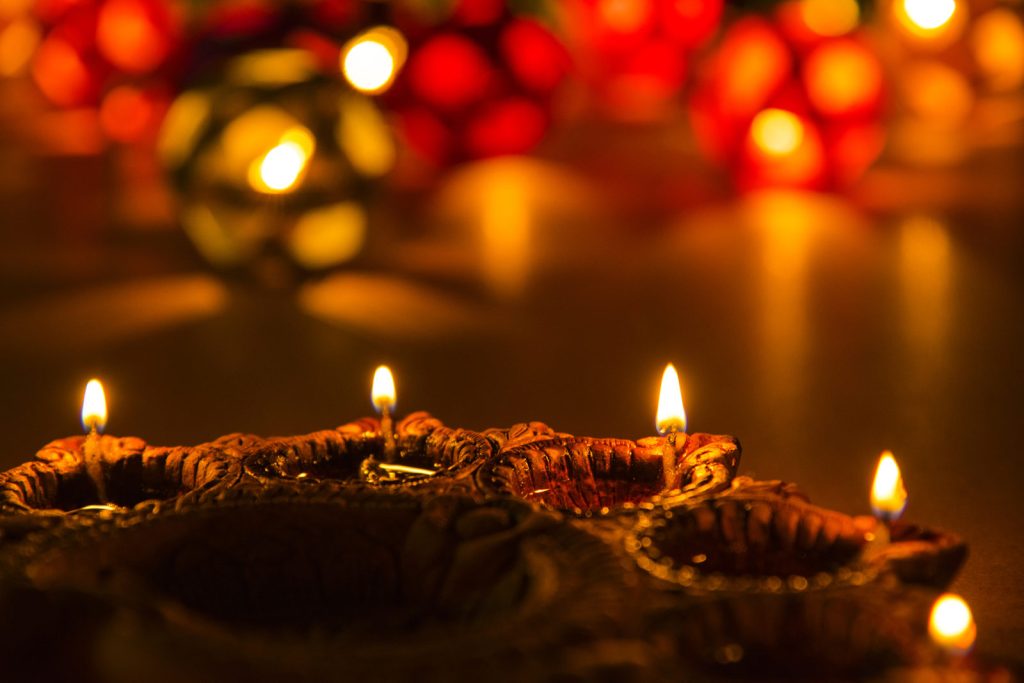
Deepavali or Tihar or Diwali Deepavali or Diwali is known as Tihar in Nepal, and it ranks second only to Dashain. This festival takes five days during the Nepali month of Kartik (October to November on the Solar Calendar). The Hindus honour crows, dogs, cows, bulls, and Laxmi – the Goddess of luck and wealth. Many candles and lanterns are lit in Goddess Laxmi’s honour; hence, Tihar is also known as the festival of lights. The celebration of lights usually falls from mid-October to mid-November. Festival Traditions of Tihar Tihar Festival is the second most significant Hindu festival in Nepal. It is celebrated for five days and bestowed with Nepal’s traditional cultural characteristics. Moreover, each day marks a different animal; for example, the first day is celebrating or worshipping crows, known as the ‘harbinger of death.’ People offer rice on the ground to feed the crows. The second day of Tihar honours the dogs, believed to be ‘the guardians of the god of death.’ The third day welcomes Laxmi, the Goddess of Wealth. On the fourth day, honour and thank the cows. Finally, the fifth day is a vital bonding day between brothers and sisters. The sisters place ‘Tika’ on their brothers’ forehead while praying for their excellent health, prosperity, and long life; the brothers return this favour by showering the sisters with gifts. On the first day; Kaag Tihar/Crow Day, worship of crows Hindus worship the crows ‘the messenger of death, by offering them rice. This is one day in the year when they get fed and can take a break from scavenging. The people try to ensure that the crows are well fed; otherwise, they believe that the dissatisfied crows will bring bad luck to the coming year. The second day, Kukur Tihar/Day of the dogs. Kukur Tihar is celebrated to honour the Nepalese dogs’ belief that their deceased relatives’ souls are guaranteed entrance into heaven. People put ‘Tika’ on the dog’s forehead and floral, 9usually Marigold garlands, followed by a good meal. The Nepalese Hindus believe that the dog’s role is vital as the ‘gatekeeper of death’ and leads the deceased’s souls onto the other side of the river of death in the afterlife. On the day honouring the dogs, even the armed services such as the Police, Armed Police, and Army’s dog unit apply Tika and beautiful garlands to the dogs in their unit as a sign of appreciation of their work. On the third day, Gai Tihar or Laxmi puja – the cow’s honouring and the Goddess of prosperity. The Nepalese worship cows and the Goddess of wealth – Laxmi, on the third day of Diwali. Most people consider this day the most important festival day as everyone likes property. The devotees wake up early to clean each room, nook, and corner thoroughly. Then, they bathe before applying red Tika on the forehead, floral garland on the neck, and tying holy string given by a Brahmin priest to the tail of a cow. Come the evening, many candles, oil lamps, and electric lights are lit up by the doors, staircases, walls, and roof. All Nepalese homes are made as bright as possible, believing that the lights will grab Laxmi’s attention and entice her to visit their house. On Laxmi puja, all businesses remain open to welcome the Goddess of wealth. The children and the youth go around the house singing traditional Diwali songs – almost like Caroling; the house owners give them money, sweets, fruits, and rice in return. This is called Deusi Bhailo. Despite being banned in Nepal, kids and adults also light up fireworks during this festival. The fourth day: Goru Puja, or honouring the Ox or bull. The fourth day is a bit more diverse in what is honoured, depending on the people’s ethnicity. Ox is considered an indispensable assistant to the farmer, hence the honouring of the Ox (Goru puja). An ox is deemed to represent Govardhan Hill https://en.wikipedia.org/wiki/Govardhan_Hill, and as a tribute to it, cow dung is used during Govardhan puja. The Newar community considers this day as their New year. Therefore, all Newars gather for this festival in the Kathmandu Valley and perform Maa puja to honour themselves. The oldest patriarch of the family paints two geometric figures, namely; i) to bless all members of his family ii) to celebrate the death of Yama ( the god of death) and his messenger. All family members celebrate and indulge in delicacies, sweetmeats, drinks, and merrymaking. The fifth day: Bhai Tika/ siblings day. The fifth day is the last day of the Deepavali/Diwali/Tihar festival. The siblings gather together on this to celebrate each other. First, the sisters put multi-coloured tika, a lovely garland on the brothers, followed by special treats known locally as ‘Shagun.’ Then, the brothers perform the same ritual and shower them with gifts. This celebration strengthens the bond between brothers and sisters. Tihar Festivities. There are no hard and fast rules for this festival’s ceremonies, although some old traditions are carried out in modern-day Nepal. Nevertheless, there are some similarities between Christmas and New year, like with the rest of the world. It is a tradition to purchase gold and silver jewellery on the eve of Laxmi puja with the hope of more prosperity for the coming year. Once the festival of lights begins, all rooms of every house are cleaned thoroughly and painted to welcome the visiting gods and goddesses. The people get dressed in their new clothes hoping prosperity will stay with them for the rest of the year, if not the remainder of their lives. The business communities replace old account books that start with new books for better business. Every household and shop is lit up in bright lights; some even light fireworks for entertainment. Tihar is also a time for family and friends to rejoice and exchange gifts while indulging in food and drinks. Conclusion Tihar is one of the eleven festivals that occur during the autumn months of October to the
Dashain or Vijaya Dashami
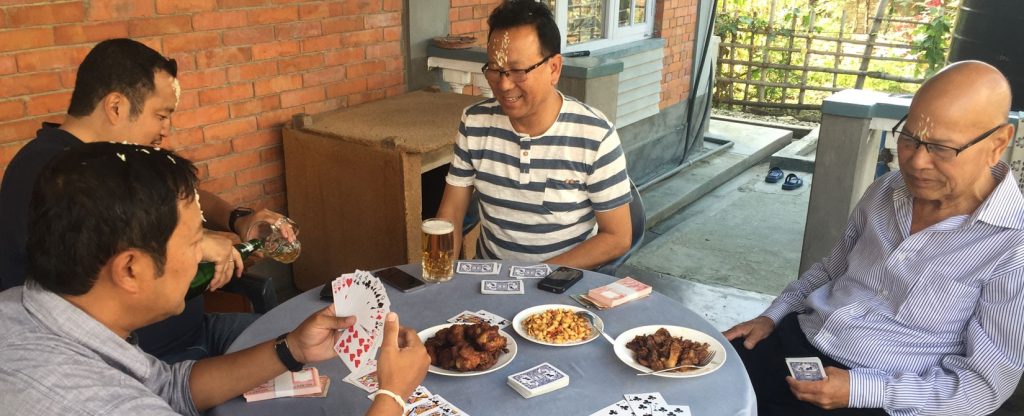
Dashain or Vijaya Dashami is the most significant Hindu Festival in Nepal. Dashain or Vijaya Dashami is the longest and most significant Hindu festival widely celebrated throughout Nepal. It is fifteen days in length; it falls on the bright half of the lunar month of Ashoj, which usually falls between September/October and ends on the day of the full moon. The Goddess Durga is worshipped in her numerous manifestations during the first nine days, known as Navratri, until the ninth evening – Navratri. A grand procession of idols representing various Hindu gods and goddesses is taken out in every village, town, and city on the tenth day to rejoice in the victory of good over evil. The remaining five days mark the celebration of blessings from the goddess to commemorate the victory. Like many religious festivals, Dashain involves many prayer (puja) rituals, generous offerings of exceptional food, fruits, animal sacrifices, and blessing from the family elders, followed by plenty of merrymaking. Navratri The first three nights are dedicated to Durga’s various manifestations, such as Mahakali, the goddess of divine power (shakti) and action; Parvati, a dedicated wife and mother; and Kali, the goddess of destruction. The next three nights are devoted to Mahalaxmi, the goddess of purity and wealth. The final three nights are dedicated to Maha Saraswati, the goddess of knowledge and arts. As usual, there are some mythological tales connected to this festival. The most common one is the victory of the gods over the demons. Despite this festival being celebrated to honour Durga, she is believed to have had all gods and goddesses’ collective strength to defeat the monster Mahisasura. The first nine days represent the fierce battle between Durga and the beast. Legend has it that gods were defenceless against the army of demons led by Mahisasura. So the gods were instructed to contribute a part of their divine prowess to form a new goddess to defeat the demons. Hence, Mahisasura Mardini’s formation – another name for this manifestation of Durga was devised with the combined might of 330 million Hindu gods and goddesses. Dashami, or the tenth day, is celebrated when Durga, combining power with the gods and goddesses, defeats Mahisasura. Rituals of the fifteen days Every single day of the fifteen-day festival holds its importance. Ghatasthapana is the first day of the celebration. Ghata or Kalash means “holy vessel,” and sthapana means to inaugurate. Kalash symbolises Durga covered and purified with cow dung, spruced up with flowers, and placed in a hallowed room where local terms are known as ‘puja or Dashain Ghar’ for prayer. Like most Hindu festivals in Nepal, cow dung is utilised to clean and paint the house and porch as it is believed to be holy and works as a purifier. A rectangular area is set aside to place the Kalash in the middle. Barley seeds, believed to be pure, are placed around the Kalash. In ancient times these seeds were brought from the bed of a holy river. The Kalash is treated as a representation of the goddess and is worshipped throughout the festival. On the day of Ghatasthapana, Shailaputri, another form of Durga, is worshipped. An oil lamp known locally as ‘diyo’ is lit throughout the Dashain until this festival’s final day. Hindus worship the Kalash during the evening and morning rituals. The rituals are either led by Brahmin priests or the elder of the household. These rituals are performed during auspicious moments; astrologers determine these moments. The ceremonies conjure the goddess Durga to reside within the Kalash. The Kalash and sand are sprinkled with water and are protected from the sun throughout Navratri. The barley seeds grow into five or six-inch tall wheatgrass called jamara by the tenth day. It is used on the day of tika to bless the family members by the elders. The barley seeds are sown in every household to keep them purest form during this puja. The wheatgrass symbolises wealth and prosperity, and the yellow ‘jamara’ is considered auspicious. The next phase of the festival that brings significant excitement comes with Fulapati, also known as Saptami – the seventh day of the celebrations. Fulpati, meaning sacred flowers and leaves, are collected for three days from neighbouring forests. The family members are not allowed to go inside the puja ghar from this day onwards. Instead, a unique ceremony occurs in Kathmandu valley when the jamara and Kalash used by the Royal family are brought from their ancestral home in Gorkha in a three-day march complete with military ceremony priests. Government officers dress in traditional attire while waiting for the arrival of pulpati on the route to join the parade to Hanuman Dhoka. First, the fulpati and the Kalash, including the jamara, are placed in the Royal Dashain Ghar. Then, the Nepalese army fires a gun salute as the sacred items are being set at the Hanuman Dhoka Palace as the Kings used to observe it – these days, the President of the nation witnesses this ceremony. Maha Ashtami is the eighth day when animal sacrifices occur in most Hindu homes throughout Nepal. An exciting practice used to be animal offering was offered alive to be left in the Goddess’ temple’s vicinity as an offering. However, some staunch Hindus fast today, and vegetarians offer vegetables such as radishes, coconuts, eggs, and calabash (bottle gourd) instead of animals. These days the families that make an animal sacrifice consume the meat during this festival. The following night is known as Kal Ratri. Hundreds of male chickens, ducks, goats, sheep, and water buffaloes are sacrificed in temples dedicated to Durga, the old palace, police, and army barracks throughout the nation. Most people in Kathmandu make their animal sacrifices at Hanuman Dhoka at Basantapur. All the courtyards are busy night and day during this period. Navami, or the ninth day, is the final day of the Navratri. This is the day when most animal sacrifice takes place. For example, Mahisasura is believed to have taken a buffalo
Common mistakes about the Himalayas
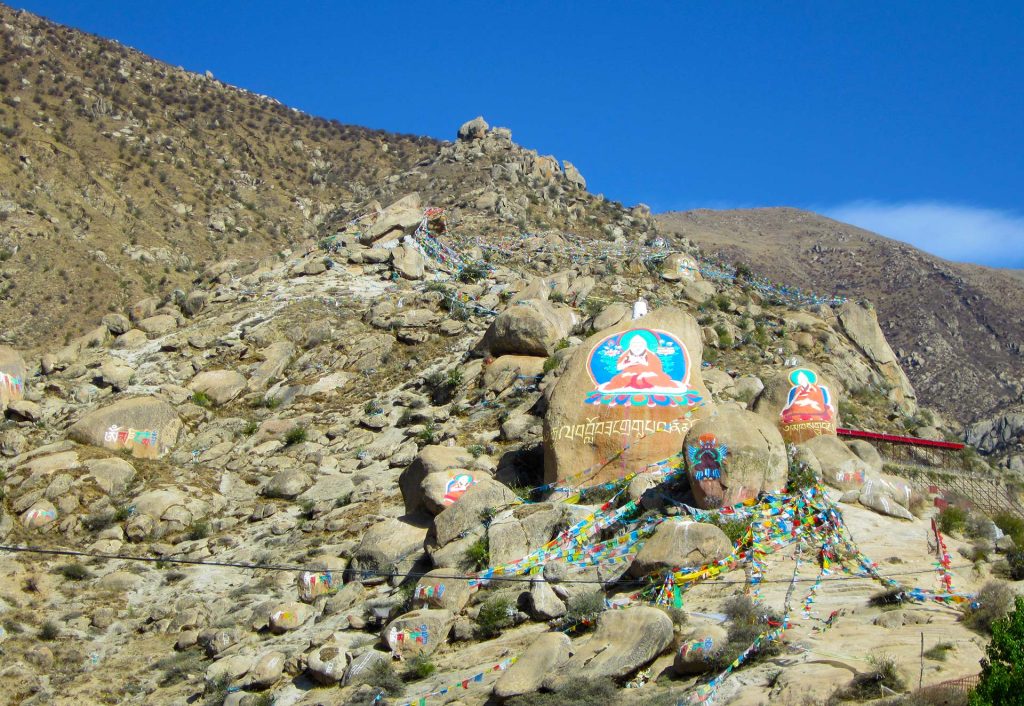
Common Mistakes About The Himalayas The entire Himalayan region is something like a mythical land to many people worldwide. Known for its unique culture, towering mountains, and serene reputation, it can begin to seem almost utopian to some. Or, at the very least, it looks like a place that differs from the rest of the world. Some of these perceptions may be entirely fair. However, there’s also a good chance that if you’re preparing for a trip to the Himalayas, you’ve bought into a few myths about the area. The mild air of mystery surrounding the region in many international eyes ultimately leads to a degree of myth-making and fictionalization, which is to say there are some common misconceptions about the Himalayas. These are just some you may want to be aware of. Secret Kingdoms Again, the Himalayan region projects an air of mystery to much of the world. Within this perception, people undoubtedly imagine whole secret countries or kingdoms within the mountains. That might sound silly until you consider something like the widely popular video game Far Cry 4, set in a fictional land called Kyrat in the Himalayas. The game’s makers were careful to establish some accuracy, saying they wanted to find the kind of place on the edge of the map and a history of political instability. The result is a reasonably believable fiction that millions of gamers dove into. But rest assured: there are no secret kingdoms in the mountain ranges, though there has been political turmoil and conflict at various points in modern history. Pure Buddhism Buddhism fits with how many people in the international community see the Himalayas. And particularly in Nepal, there is a history of Buddhism, which makes this perception completely understandable. That said, the area as a whole is probably less Buddhist than a lot of people imagine. Those who practice religion seriously are Hindu as often as they are Buddhist, if not more, and there are Muslims and Christians in the region. Sherpa Assistants Perhaps one of the more offensive misconceptions about Himalayan culture is that Sherpas are nothing more than assistants or guides for tourists. Of course, experienced Sherpas can and do help visitors hike through difficult areas safely. But they’re not merely tour guides, nor do they exist solely for the convenience of travellers. So we’ll say it in the most precise possible terms: Sherpas are an ethnic group, and while they’re concentrated primarily in the Himalayas, some live out and about in the world. Casino Activity This may not be quite as widespread a misconception. However, just as the video game mentioned above can affect a widely available slot machine arcade based in the Himalayas. These days, mobile games can be released worldwide quickly and effectively, which means all kinds of exciting themes are enjoyed by people all around the planet. Thus, a game called the Himalayas: Roof Of The World, which primarily traffics in traditional Himalayan imagery, can make an impression. Some might well have come to believe it indicates that there is casino activity in the region when, in fact, there is very little, if any, at all. Shangri-La The myth of Shangri-La is associated with a few different places in the world. However, many think of it as a valley, mountain range, or even a small municipality of some kind within the Himalayas. This idea was likely furthered by the game above Far Cry 4, which has Shangri-La chapters, so to speak, within its Himalayan city. But, sadly, it’s all a myth. Shangri-La does not exist, at least in a clear-cut sense. Instead, it’s a fictional land from an adventure novel, believed to be based on a conflagration of southern Asian valleys and morphed into a utopian vision. Check out our Trekking packages for Nepal, Bhutan, India, and Tibet.
Retreats for Cleansing Eliminate Stress and Clear Your Body

Cleansing Retreats: Eliminate Stress and Clear Your Body Cleansing Retreats: Eliminate Stress and Clear Your Body Ayurveda, Organic food, Yoga / By Paige Reist Cleansing Retreats in North Carolina Even the best computer needs to be restarted every once in a while. But, between the toxins and chemicals in most modern western foods to the particles in the air we breathe to the stress that we put ourselves under at work and home, there are times when what you need more than anything is a chance to clear out the mind and body and start fresh once again. Cleansing retreats are designed to refresh and restore the body inside and out. Relaxing and fun, these retreats are an escape with a purpose, one where the end goal is to leave feeling you are more energized and ready to take on the challenges of the everyday world. What is a Cleansing Retreat? Several strategies can be used at these retreats. For example, at the Art of Living Center in North Carolina, our cleansing retreats are designed to detoxify the body using relaxing spa services, nourishing Ayurvedic techniques, and a venue that helps each attendee become more in touch with nature. For example, our Panchakarma Detox Retreat is a cleansing retreat that involves: Daily Ayurvedic Meals – Delicious meals cooked by trained chefs that nourish and detoxify the body. 10-14 Spa Treatments – A variety of relaxing and enjoyable spa treatments give you that sense of relaxation that eliminates tension and stress. Daily Progressive Yoga and Meditation – Trainered staff engagement in yoga and meditations helps bring you more in touch with your spirituality and develop mindfulness to address upcoming challenges. This is one of many different options for cleansing retreats. We also have our weekend cleanse retreats and Ayurvedic weight management program, combining cleansing with exercise and calorie control. Different Cleansing Retreats – Each a Great Experience Every cleansing retreat addresses detoxification and relaxation differently. However, the idea is the same throughout – to eliminate toxins in your body so that you feel alert, energized, and in many ways like a new person. It is to give you that restart that so many people need to feel more vibrant, energetic, and calm, able to work and play at your peak capacity and be ready to give all of your energy to any task you undertake. This article originally appeared on the Art of Living Retreat Center’s Website. Check out our Trekking packages for Nepal, Bhutan, India, and Tibet.
Trek to witness Chandras wedding
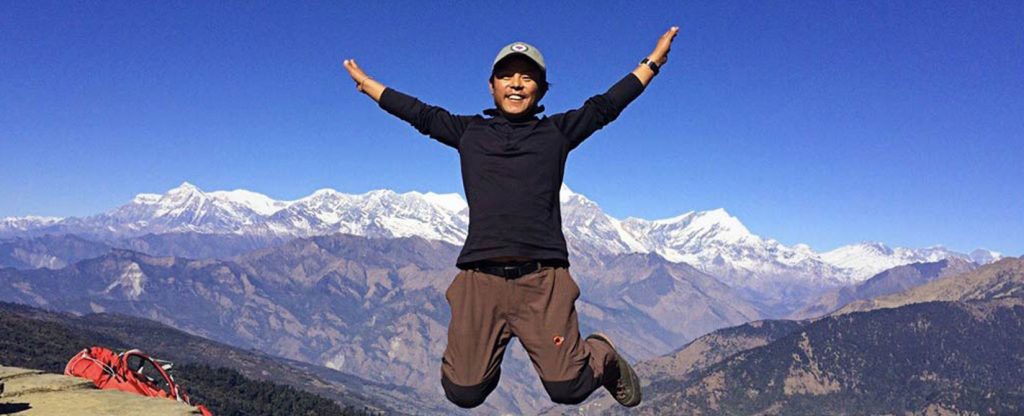
Chandra’s Wedding Trek Chandra’s Wedding Trek. Witness a traditional Rai marriage ceremony in Rural Nepal. Many of you know Chandra from trekking with him in Nepal or India or both countries and Tibet. Chandra comes from the Rai ethnic clan of Nepal. Their matrimonial practice is unique. When the bride and groom are to be with their families, they agree on the partnership and get engaged. Upon engagement, they start living together. However, it could be years or even decades before the final solemnization of their marriage takes place. Such a ceremony can be a massive burden financially to both the bride and groom’s families. They have to provide a free flow of alcoholic beverages (locally distilled or fermented); pigs and chickens are slaughtered to feed the guests for several days. Chandra’s marriage was solemnized on the 18th of February, 2018. Chandra and I have discussed opening up his wedding to be witnessed by our friends from overseas. This event will be a great cultural experience for those attending. Few foreigners have visited this part of Nepal as it lies off tourist/trekking trails. We sent the first and only trekker to this part of Nepal in October 2016. We have designed this package so you can see the real Nepal and experience a “once in a lifetime” cultural event. It will also be a great photographic opportunity to meet people who are not in Nepal’s tourist part. Part of the proceeds from this trip will go towards helping both families with wedding expenses. It is estimated that between 100 – 200 relatives and villagers will attend this wedding event on each side of the family – a substantial financial burden. Itinerary: 14/2/18: Arrive in Kathmandu to be met at the airport and transferred to the hotel. Well, well, arriving for the wedding on Valentine’s day… Hmmm. 15/2/18: Drive towards Patale on the border of Okhaldhunga and Solu Khumbu districts. We will be staying overnight in a basic lodge. 16/2/18: Drive for 3 hours or more, depending on the road conditions to the Inku River. We will start the trek to Chandra’s village of Majgaon, Pawei. The trek begins with a steep climb for about two and a half hours and turns into undulating terrain—4 hours of trek. You will be treated to a traditional Rai feast and cultural show in the evening. Overnight in a tent. 17/2/18: We will go for a short walk outside of the village. In the afternoon, lunch with Chandra’s immediate family, e.g., his parents, brothers, and their families – provided they are not preoccupied with the wedding chores. 18/2/18: Today, we will be part of Chandra’s family wedding procession to the bride’s village. They will play traditional musical instruments, drink, dance, and make merry on the way to the bride’s village. We will stay in the bride’s village for the night in tents. 19/2/18: We will witness some traditional ceremonies before leaving the bride’s village to return to Chandra’s home with much festivity. 20/2/18: We retrace our steps back to the road, head and drive to Phaplu, where there is an airport. 21/2/18: We take a short 30-minute flight back to Kathmandu. The rest of the day is free to wander around Thamel – the tourist hub of Kathmandu. 22/2/18 International departure. Cost US$1200 per person on twin sharing basis. Cost includes: Two nights in a 3-star hotel in Kathmandu with breakfast. Two nights in lodges outside Kathmandu with breakfast, lunch, and dinner. Six lunches and dinners when outside of Kathmandu. Drive to Chandra’s village in private jeeps. Tents while in the villages. Domestic flight from Phaplu to Kathmandu. Click here for our next wedding trek. Also, check out our Trekking packages for Nepal, Bhutan, India, and Tibet.
Bisket Jatra Festival of Bhaktapur
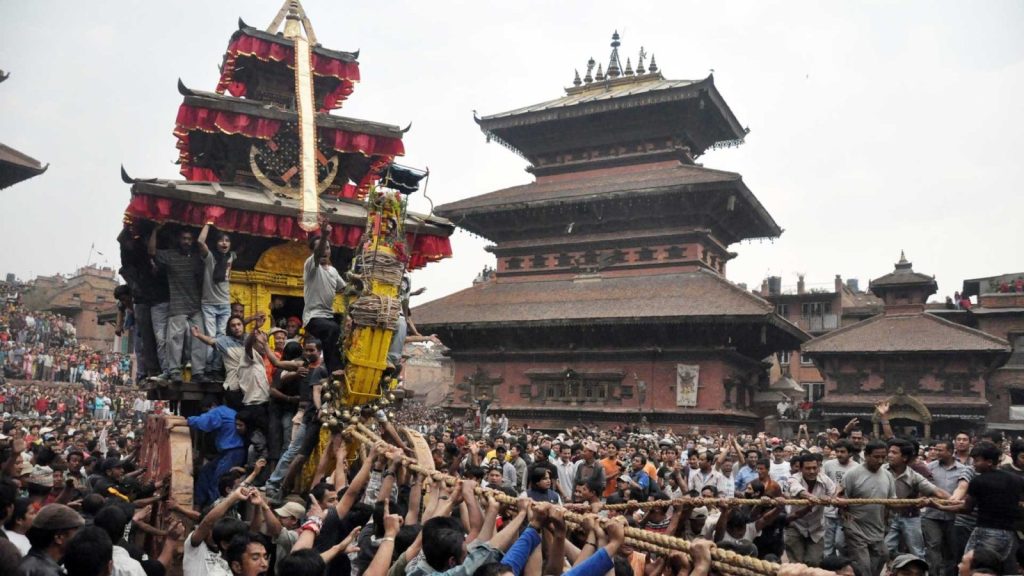
Bisket Jatra Festival, Bhaktapur Nepal. 13th April – 14th April 2020 10th April – 18th April 2019 Jatras or Festivals hold an immense religious significance amongst the Newar community of Kathmandu valley. The New communities of Kathmandu, Lalitpur, and Bhaktapur districts celebrate several Jatras devoutly annually. The Newars of Kathmandu celebrate Indra Jatra as their main Festival, the Newars of Lalitpur celebrate Rato Machindranath Jatra, while the Newars of Bhaktapur observe Bisket and Gai Jatras. Bisket and Gai Jatras are important festivals where thousands of people gather at the Bhaktapur Durbar square to watch these festivals. The Bisket Jatra is a nine-day festival that falls at the end of the Nepalese month of Chaitra. This Festival signifies the end of a year and the beginning of a new year on the Bikram Sambat calendar. The Jatra’s primary focus is pulling chariots of two deities, namely the Goddess Bhadrakali and the wrathful God Bhairav. The chariots are assembled in the Bhaktapur Durbar square a few days before the event. Then, young locals pull it through the narrow streets of Bhaktapur. The History of Bisket Jatra Several historical stories behind the Bisket Jatra relate to the gods and goddesses. One of the many versions of the locals’ stories is snakes, which the Newars of this vicinity widely accept. Thus, Bisket Jatra is also called the “Festival after the serpent’s death.” Various areas of Bhaktapur celebrate this Festival according to their customs. The Princess and her snakes King Jagajyoti Malla was fascinated by the folklore and myth about a beautiful princess and her husband’s recurrent deaths. The Princess was bound by a curse that compelled anyone marrying her to die the next day. As a result, many young men lost their lives after marrying the Princess. Subsequently, a young man was chosen to marry the Princess, despite the worries of his elderly mother. Goddess Bhadrakali came in the guise of another elderly lady and advised the young man to stay awake even after the Princess fell asleep. The Princess lay in bed and fell asleep quickly after the consummation of the marriage. However, the young man heeded the advice of the elderly lady and stayed awake. He sat beside the Princess and looked at her face. After a while, two venomous serpents crawled out from the nasal of the Princess. The young man killed the snakes quickly with his sword, which freed the Princess from the serpents’ curse. King Jayajyoti loved this myth so much that he wanted it to be remembered with happiness and joy. So the occasion was initially called Biskyaku Jatra, now known as Bisket Jatra. Bi Syaku means “the snake’s laughter” in the Newari language. The two serpents and rice grains Another famous myth about this Festival revolves around the Shidev Kings. The Kirats (an ethnic group of Nepal) attacked, looted, and beat Bhaktapur’s residents when the Shidev Kings ruled over Kathmandu. The King consulted Shekharacharya – a tantric (one who performs black magic), to prevent such attacks. The tantric transformed himself into a tiger and chased out the Kirats. One day the tantric’s wife wanted to see him in the form of a python, forwarding this request. The tantric gladly obliged and gave her some rice grains to be sprinkled onto him to turn back into his standard form. However, after Shekhararchaya transformed into a python, his wife got petrified and ran away without spraying the rice grains onto the python and ate the rice grains. As a result, she, too, turned into a python. Once the couple realized they had no choice, they took their own lives on the river bank. The kings started to erect the Lingo to commemorate the memory of the unfortunate couple. There are many more stories on how Bisket Jatra came about. But, despite this, Bhaktapur’s legacy of Bhadrakali’s advice and the two serpents with the rice grains are the most popular among Bhaktapur locals. The celebration. Bhaktapur Durbar Square and Thimi are the two central locations where Bisket Jatra is celebrated. The Festival at Durbar Square attracts people from all over the Kathmandu valley. The locals assemble and erect the main chariot of God Bhairav and another for the Goddess Bhadrakali. Bhairava and Bhadrakali are enshrined in their respective chariots a few days before the Nepali new year. They are pulled through the narrow alleys and streets of Bhaktapur by groups of young men. Another highlight of this Festival is the tug of war between the upper and lower part of this town. Thane – the upper part, and Kone – the lower part, pull the chariots towards their side. The chariot is pulled towards Kalla Tole later. Sindur (Vermilion) Jatra is celebrated during the Bisket Jatra in Balkumari, Thimi. First, the residents of Thimi gather, pulling their chariots. Then, groups of people gather and bring out thirty-two palanquins called Khats, that consist of various gods. Next, Sindoor powder is showered over the gods’ statues, and the people apply Vermilion onto each other while offering prayer to the gods. Bode is an ancient Newar town that lies to the East of Kathmandu. They celebrate body piercing during this Festival. A volunteer from the Shrestha clan pierces his tongue with a metal spike and roams around the town’s parts by carrying fire torches on their shoulders. The Lingo The Lingo is a pole that people erect during the Bisket Jatra. The tradition of constructing the Lingo was started to celebrate the life of the King’s son-in-law, who survived the wedding night. Two lingos of around fifty-five feet are erected in two different town locations. The pole is brought down the following day in the significance of the beginning of the new year. Two hands given to the pole symbolize the two serpents of the myth. The hands are covered in red cloth, which represents the snakes. A long banner is hung from the top of the pole to symbolize an ancient mythological battle’s victory. When the symbolic hands on
Bird Watching around the Kathmandu Valley
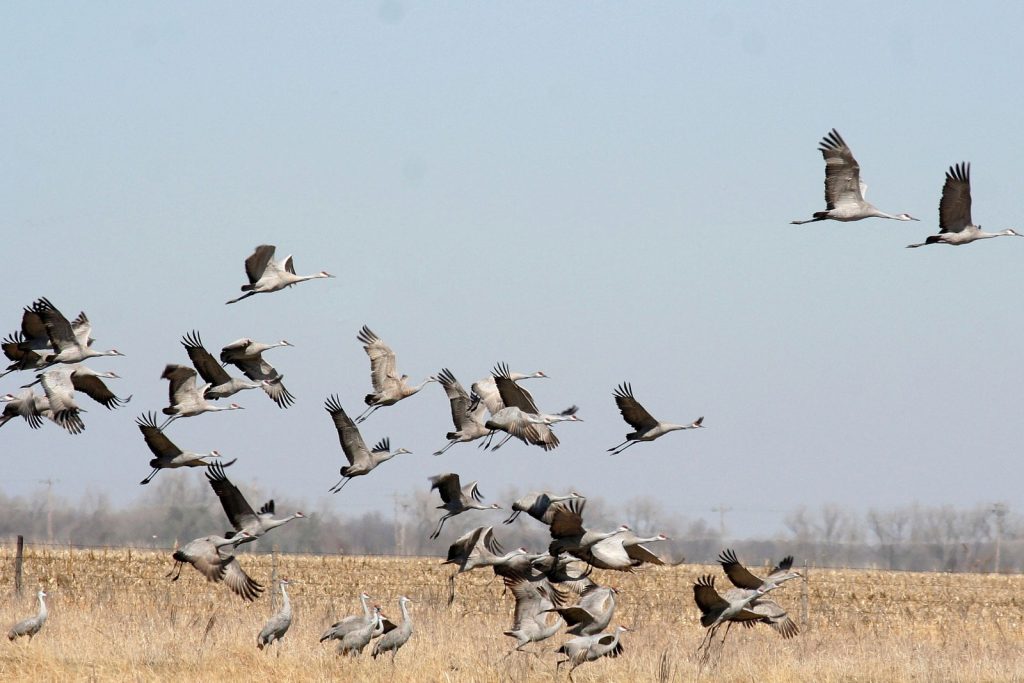
Bird-watching around the Kathmandu Valley Written by Vimal Thapa. About the Writer: Vimal is an Avid Bird and Nature lover. Vimal has been a passionate Naturalist since 1988. He is also an Executive Member of the Bird Conservation Nepal (BCN) Birds are one of the greatest gifts of nature that Earth abounds with. Birds are one of the unique lives on Earth due to their wings and ability to fly anywhere. Birds have been associated with humans since immemorial, and their presence around us creates a lively environment. Nepal is blessed with abundant birdlife with 884 species (Inskipp-Birds of Nepal), some 9% of the world. These beautiful birds mainly include resident and migratory species, among which many are globally threatened, nationally threatened, severely endangered, and passage migratory species. In addition, Nepal has nine species of birds that are strictly under the protection law of the country. Danphe or Himalayan Monal (National bird of Nepal), Satyr Tragopan, Chir Pheasant, Sarus Crane, Great Hornbill, Black Stork, White Stork, Bengal Florican, and Lesser Florican. Bird watching is becoming a favourite hobby in Nepal for pleasure, recreation, research study, nature exploration, etc. It is also economically beneficial as local and international birders and ornithologists travel to Nepal to watch this area’s birds. Kathmandu valley also unbelievably has a rich bird diversity of about 500 species. Bird watching can be done in greenery, garden, farmland, open area, or forest and hillside. Among many bird-watching sites, Godawari, Phulchowki, Shivapuri-Nagarjun national parks, Machhegaun, and Tau Dah are some of the best bird-watching areas in the valley. Some common and uncommon species of birds recorded in the valley are- Barbets, Warblers, Babblers, Flycatchers, Laughing thrushes, Tits, Magpie and Treepies, Swallows and Swifts, Ducks and Waders, Raptors, Finches and Spiny Babbler Turdoides Nipalensis only endemic species of birds. Bird Conservation Nepal, one of the leading bird conservation and information authorities in Nepal with authentic bird records and related data, helps in nature and bird education and preservation. Bird Conservation and FoB (Friends of bird) organise weekend birding tours in the valley that anyone can join and benefit from. All you need is your keen interest in nature to see and appreciate birds in their natural habitat. A pair of binoculars, a notebook, and Birds of Nepal book are the basics you need to carry. Check out our Trekking packages for Nepal, Bhutan, India, and Tibet.










